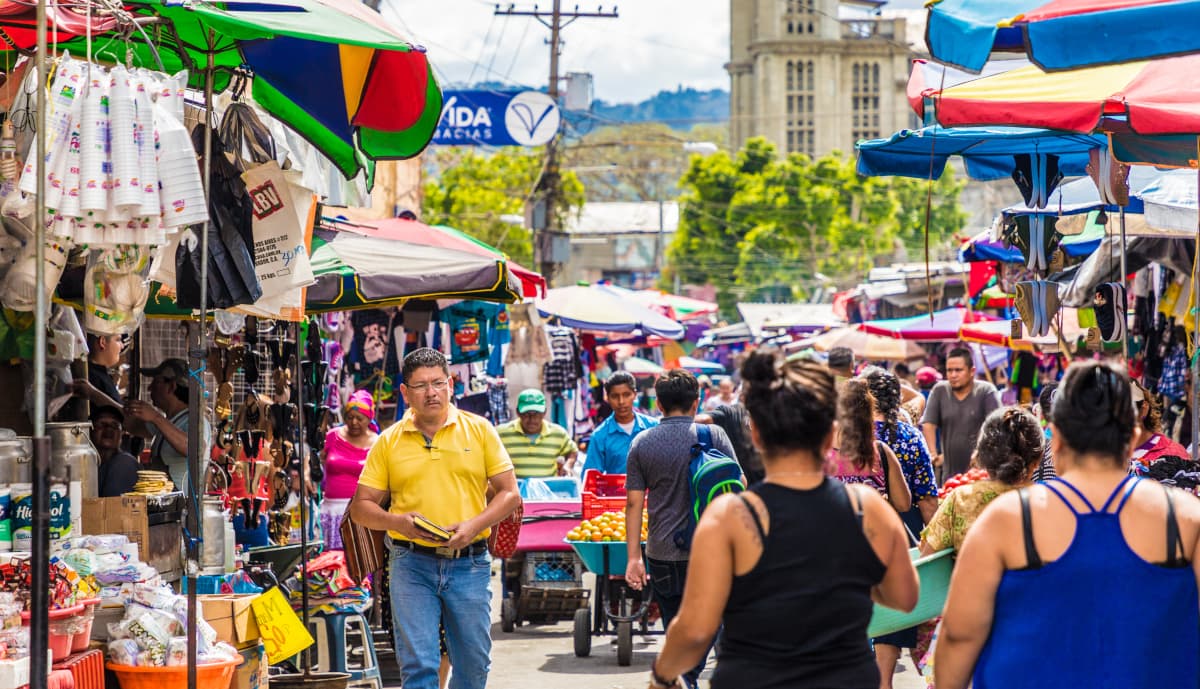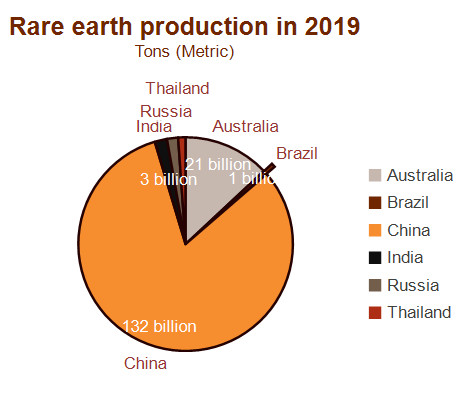Latin America holds the key to the global green transition, while the region is increasingly feeling the pinch of climate change

Highlights
- Latin America leads the world in clean energy thanks to its large share in renewables for electricity generation.
- Despite low CO2 emissions, Latin America is highly exposed to climate change through frequent droughts, floods and aggressive hurricanes.
- Latin America is an important food exporter, with intense droughts putting harvests at risk and creating a large impact on global food security.
- Latin America has an abundant supply of strategic minerals and keeps a largely neutral stance when it comes to geopolitical powerplay.
- Climate issues are a hot topic in Latin America and the region is expected to take the international stage in the coming years.
Latin America leads the world in clean energy
Latin American countries, especially South America, generate less greenhouse gas than the rest of the world (see the graph below, where the light grey line represents South America). When looking at CO2 per capita, Latin America is also performing well. The country with the highest figures for CO2 emissions per capita is Venezuela, ranking 92nd among 241 countries worldwide. The main reason for this is that Latin America has a low economic reliance on hydrocarbons, while the region also has the largest share of electricity generation from renewables. A total of 30% of total energy consumption in Latin America comes from renewable energy resources, chiefly hydropower, according to the International Energy Agency. This is in stark contrast to the rest of the world, which only relies on renewable energy for 12% of its energy consumption. Moreover, Paraguay, Uruguay and Costa Rica tend to produce almost 100% of their electricity from renewables, making Latin America the world leader in clean energy.

That being said, there are still many further avenues that could be explored to increase the region’s use of renewables. As shown in the graph below, Latin America still relies quite heavily on fossil fuels when compared to renewables. One example of an underused renewable energy that is very promising for the region is geothermal energy – Latin America has a vast network of volcanoes and geologic fault lines (it sits on the Ring of Fire). However, geothermal sources are largely underexplored, barely comprising 5% of their assessed geothermal potential in the region. Before developing this avenue, the region will need to create regulations and policies to shore up investment.

Exposure to droughts, floods and aggressive tropical storms
Despite being a leader in clean energy, Latin America is highly exposed to climate change. In the past years, it has witnessed more aggressive and more frequent droughts, more extreme tropical storms and glacial lake floods. The entire region is affected, albeit to varying degrees, as illustrated in graph 2; the countries with the highest vulnerability towards climate change having a higher ND-GAIN vulnerability index. This index captures a country's long-term exposure, sensitivity (e.g. through dependence on a sector negatively affected by climate hazards or the proportion of the population particularly susceptible to a climate change hazard) and its capacity to adapt to the negative effects of climate change. Haiti has the highest index in the region, as it has the highest drought risk, although it is also vulnerable to tropical storms and has low adaptative capacity. Other Caribbean islands also rank highly, as many lie in the hurricane belt where tropical storms are becoming fiercer and more extreme due to climate change, which in turn has a high economic impact – especially on the smaller Caribbean islands.

The entire region has also been suffering from more extreme droughts in the past years, linked to climate change and local deforestation (such as the Amazon, for example). For the third year in a row, South America suffered a “La Niña” weather pattern (a rare “triple dip”, and the first this century), with climate change the main suspect for this altered weather pattern that brought droughts and wildfires to Chile, Paraguay, Uruguay and Argentina over the last summer. Meanwhile, Central America has not been spared, suffering from a “dry corridor” in which the area extending from southern Mexico to Panama has seen frequent extreme droughts in the past 15 years, especially during “El Niño” years (an opposite weather pattern to “La Niña” that research suggests is becoming more extreme due to climate change). As a result of these droughts, hydropower reserves are lower, which consequently results in power supply problems, such as those experienced by Brazil in 2021. Moreover, crucial river transport routes have to be curbed regularly, such as on the Paraná River (the second largest river on the continent) running through Brazil, Paraguay and Argentina, while the Panama Canal is also at risk of drying up. Droughts and the ensuing pests these bring with them have led to lower harvests overall. As extreme droughts become the new normal, water and food resources in many countries in the region will come under severe strain, and as Latin America is an important food exporter, this trend will have a large impact on global food security.
Finally, recent research has shown that the continent is very vulnerable to glacial lake floods, especially the Andes region (Peru, Bolivia, Argentina, Colombia, Chile and Ecuador). Since 1990, the number and size of glacial lakes globally has grown rapidly due to climate change. Moreover, the population living downstream from these glacial lakes has increased rapidly, leaving the Andes region with the second highest risk in the world from glacial lake floods, with a large percentage of the population affected, coming in after only the High-Mountain Asia region (mainly Pakistan, India and China).
Tighter water supply will lead to more operational risks for companies
Latin America has the world’s most abundant water resources. However, most of the water use in these countries is concentrated in a few regions with relatively limited supplies, while their water resources are largely remote and inaccessible. The region is therefore susceptible to water stress. Water stress occurs when the demand for water exceeds the available amount during a certain period or when poor quality restricts its use. At present, no Latin American countries are falling under extreme water stress according to the Water Institute ranking of 2019 (the only regions that are being Sub-Sahara Africa and the Middle East), with Chile under the highest water stress in the region, followed by Mexico. The water issue will become a pressing political question in coming years, as key water-consuming industries such as breweries, agriculture and mining face more criticism from the population for their contribution towards household water shortages. Business water supply has not been badly affected by drought or water stress conditions to date, owing to long-term water supply contracts; however, criticism has risen, specifically in Mexico and Chile. In Mexico, President Obrador has already threatened to end brewery operations in the drought-affected north of the country, while in Chile regulations on scarce water resources will most likely be enacted when rewriting the Constitution. In both countries – as in the rest of the region – there is a strong chance that new regulations will hamper future mining and agriculture development.
Latin America holds the key to the global energy transition
In the past year, an accelerated green transition has raised demand for minerals that are crucial to the global energy transition. At the same time, the race to secure reliable sources of supply is heating up due to global supply-chain issues and the intensifying US-China rivalry. As a result, Latin America has come under the spotlight with its abundant supply of strategic minerals such as lithium, copper, nickel, cobalt and rare earth elements, while the region continues to maintain a largely neutral stance when it comes to geopolitical powerplay. Three quarters of the world’s lithium is in South America (the “lithium triangle” of Bolivia, Argentina and Chile). Meanwhile, Chile has the world’s largest supply of copper, and Brazil holds the third-largest reserves of rare earth elements (about 10% of the global total). That being said, reserve levels don’t always reflect the production levels of these countries. Bolivia’s lithium resources, for example, have barely been commercialised at all, while Brazil is only the sixth largest producer of rare earths in metric tonnes, as shown in the graph below. There are several major obstacles to production; primarily, the investment risk (especially the expropriation risk) in some Latin American countries is relatively high, which raises business concerns about contract rights and rules of the game. In this context, resource nationalism is on the rise (such as lithium in Bolivia and Mexico). Another complexity is the increase in protests and blockades by local communities, both on environmental grounds and in order to ensure a share of the rewards from local mining activity. Project cancellation or changes to public contracts can often occur after large protests by local communities.

Climate issues are a hot topic in Latin America
Latin America has a long history of social conflicts driven by local community opposition to projects, particularly in the hydrocarbons and mining sectors. In recent years, extraction projects have faced consistent scrutiny from environmental activism, with unrest halting mining and oil (expansion) projects in Panama, Argentina and Ecuador. Newly elected left-leaning governments in Brazil, Chile, Peru and Colombia are responding to environmental pressure by implementing stronger environmental policies. However, generally speaking, progress on environmental regulation will most likely be slowed by a lack of congressional majority and the economic need to attract investment. That being said, Brazil has clearly come to the forefront since the election of Lula, who is likely to reverse the high levels of deforestation linked to agribusiness approved under former President Bolsonaro. In turn, relations with the EU (the most active region in terms of fighting climate change), are improving. Germany and Norway have already announced plans to unlock funds which had been frozen since 2019 owing to environment-related disagreements with the Bolsonaro government. The trade deal between the EU and Mercosur, which was delayed following environmental concerns cited by France and Germany, may even be revived. During the COP27 climate conference in Egypt in November 2022, Brazilian President Lula signalled that he would seek to host the COP in 2025 as Brazil, and Latin America more generally, look to weigh in heavily on the global climate change debate in the coming years.
Analyst: Jolyn Debuysscher – J.Debuysscher@credendo.com